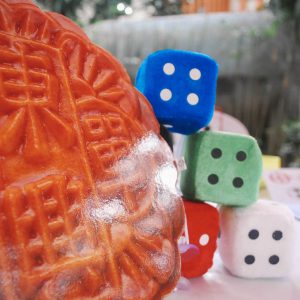Written by Regiena Siy
Edited by Patrick Ang and Aaron Medina
The Chinese-Filipinos have always been treated like foreigners in their own country, and that’s just because it isn’t clear where they truly belong. They aren’t completely Chinese because they have long been separated from their motherland, but they aren’t completely Filipino either because they haven’t exactly fully adapted to the local culture. It seems that the main source of the Chinese-FIlipinos’ identity crisis stems from the fact that they are always expected to choose a side, but the truth is, they can’t shed either of their identities as if it were as simple as changing clothes. They are both Chinese and Filipino, not one or the other, but come to think of it, there isn’t much of a difference between the two at all.
The Chinese community has been a staple in the Philippines long before the first Chinatown was established in 1594. In fact, the Philippines has always been involved with China in terms of trade and migration. Because of this, Chinese influence on Philippine culture has become rooted into modern Filipino identity.
One of the most common examples of the Chinese influence is manifested in the locals’ love for haggling with vendors. Haggling originates from the Chinese practice of frugality. The Chinese would never purchase anything without asking for a bargain, and this behavior is reflected by Filipinos whenever they are shopping in markets like Divisoria.
Another example of the Chinese influence is the wearing of red garments during occasions of celebration. Red is a popular color in China because it is associated with good luck and fortune. These implications became the foundation of the Chinese tradition of wearing red during special occasions; a practice that some Filipinos eventually adopted whenever they celebrate birthdays or New Year’s Eve.
One last example is how Filipinos have taken to using certain Chinese terms to address their family members. The words achi/shobe and ahiya/shoti are the Chinese equivalent for ate and kuya, and yet it isn’t uncommon to hear these terms being used in almost every household, regardless of whether they are Chinese or Filipino.
These practices prove that the Chinese influence has already embedded itself into the Filipino culture, and for the people who were raised as Chinese-Filipino, facets of the two cultures serve as a vital part of their identity.
The Chinese-Filipinos consider the Philippines as their home country, even though they still maintain certain Chinese customs such as speaking in Hokkien, believing in feng shui, and giving offerings to ancestors. Aside from that, nothing else sets the Chinese-Filipinos apart from the Filipino community. Many Chinese-Filipino schools teach Mandarin and Chinese history in order to help students stay in touch with their cultural heritage. To some extent, even subjects such as mathematics and science are also taught in the Chinese language. However, Chinese-Filipino schools also train students to embrace both sides of their culture by teaching the Filipino language, culture, and history. These students eventually learn to recognize that they are Chinese in culture and Filipino in nationality.
Chinese-Filipinos are always expected to choose a side, but the evidence presented shows that there isn’t really a side to choose from. Chinese-Filipinos are the products of the hybridity between cultures. They were born and raised in the Philippines, and they acknowledge their Chinese heritage by appreciating China’s culture and history. Ultimately, however, they have incorporated themselves into Philippine society because they adapted to this new culture and even added their own touch to make it their own.




